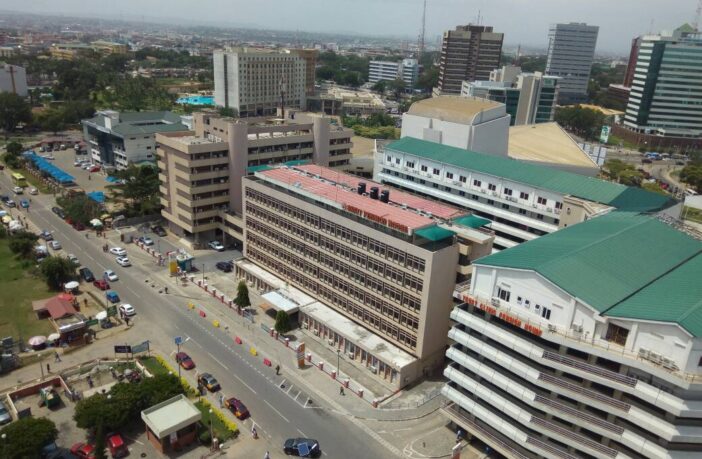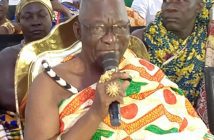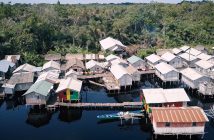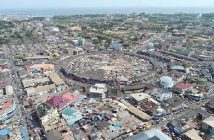A warm welcome to the Greater Accra region, the most urbanized region in the country with 87.4% of its total population living in urban centres. The capital city of Greater Accra Region is Accra which is at the same time the capital city of Ghana.
The region is made up of two metropolitan areas, Accra and Tema.
Greater Accra Region has the smallest area of Ghana’s 16 administrative regions, occupying a total land surface of 3,245 square kilometres. This is 1.4 per cent of the total land area of Ghana. It is the second most populated region, after the Ashanti Region, with a population of 4,010,054 in 2010, accounting for 16.3 per cent of Ghana’s total population.
Tema is a bustling new city, 25km east of Accra, built on the site of a small fishing village. Known locally as Harbour Town, it is home to Ghana’s number one commercial seaport and a large fishing fleet. Its modern industrial zone has become one of the region’s main commercial hubs with an oil refinery, highways and numerous factories.
For those looking to explore Ghana, the starting point is the capital, one of the safest cities in Africa, brimming with interest and easy to get around. Accra has been Ghana’s capital since 1877 and contains impressive public buildings that reflect its transition from a 19thcentury suburb of Victoriaborg to the metropolis of today.
Spread along the Atlantic coast and the Gulf of Guinea, present-day Accra is well endowed with luxury and good-value hotels, modern commercial areas and shops as well as excellent restaurants, bars and nightclubs. In addition, there are fascinating museums, notable public monuments and busy markets to be explored in old Accra.
Architecture which are several centuries old can be found in the city’s older quarters, Ushertown and Jamestown, where landmarks such as 17th century Osu Castel, the Jamestown Lighthouse and the lively fish market are well worth a visit.
In 1960, Greater Accra, then referred to as Accra Capital District, was geographically part of the Eastern Region. It was, however, administered separately by the Minister responsible for local government. With effect from 23 July 1982, Greater Accra was created by the Greater Accra Region Law (PNDCL 26) as a legally separate region.
The Greater Accra Region is bordered on the north by the Eastern Region, on the east by the Volta Region, on the south by the Gulf of Guinea, and on the west by the Central Region. It is smallest region of Ghana in total area, and is made up of 16 administrative areas.
Tourists have the luxury of enjoying rich cultural heritage and serenity upon visiting. Such as, the Lakeside Marina Park, Kwame Nkrumah Memorial Park, Efua Sutherland Children’s Park, the Osu Castle, the National Museum, La Pleasure Beach, Kokrobite Beach, Coco Beach Resort, Cocoloco Beach, Korle Beach Resort, Next Door Beach Resort, Manet Paradise, Ada Paradise Beach, Ningo-Prampram Beach, Rufus Green Parks, Labadi Beach, Laboma Beach, Titanic Beach, the National Theatre, the Independence Square, the Accra International Conference Center, Center for National Culture, Kwame Nkrumah Mausoleum among others.
The Ga people who are said to be the natives of this capital, celebrate the Homowo festival, which literally means “hooting at hunger.” This festival originated several centuries ago. It is celebrated in remembrance of a great famine that hit the Ga people in the sixteenth century. It is mainly a food festival which celebrates the passing of that terrible period in Ga history. It takes place in August every year and is celebrated by all the Ga clans.
The Adangbe people from Ada celebrate the Asafotu festival, which is also called ‘Asafotufiam’, an annual warrior’s festival celebrated by Ada people from the last Thursday of July to the first weekend of August commemorates the victories of the warriors in battle and is a memorial for those who fell on the battlefield.
To re-enact these historic events, the warriors dress in traditional battle dress and stage a mock battle. This is also a time for male rites of passage, when young men are introduced to warfare. The festival also coincides with the harvest cycle, when these special customs and ceremonies are performed. These include purification ceremonies.
The celebration reaches its climax with a durbar of chiefs, a colourful procession of the Chiefs in palanquins with their retinue. They are accompanied by traditional military groups called ‘Asafo Companies’ amidst drumming, singing and dancing through the streets and on the durbar grounds. At the durbar, greetings are exchanged between the chiefs, libations are poured and declarations of allegiance are made.
The center of population of the Greater Accra region is located in the Greater Accra Metropolitan Area which comprises the Accra Metropolitan, Tema Metropolitan, Adenta Municipal, La Nkwantanang Madina Municipal District, Ashaiman Municipal, Ledzokuku-Krowor Municipal, Ga East Municipal, Ga West Municipal, and Ga South Municipal districts.
According to the 2010 census, the region had a population of 4,010,054, making it the second most populous (total number of people) region of Ghana behind the Ashanti Region. Owing to in-migration and a high population growth rate, however, the region has the highest population density in the country.
The Ga sub-group of the Ga-Dangme people is the historical population of Accra. They form the largest ethnic sub-group in the Greater Accra Region, with 18.9% of the population. circular reference] The Ga peoples were organized into six independent towns (Accra (Ga Mashie), Osu, La, Teshie, Nungua, and Tema).
Each town had a stool, which served as the central object of Ga ritual and war magic. Now, the town of La has a community bank which offers banking services to them. Accra became the most prominent Ga-Dangme towns and is now the heartbeat and capital of Ghana. The Ga people were originally farmers, but today fishing and trading in imported goods are the principal occupations. Trading is generally in the hands of women, and a husband has no control over his wife’s money.
Succession to most offices held by women and inheritance of women’s property are by matrilineal descent. Inheritance of other property and succession to male-held public offices are by patrilineal descent. Men of the lineage live together in a men’s compound, while women, even after marriage, live with their mothers and children in a women’s compound. Each Ga town has a number of different cults and many gods, and there are a number of annual town festivals.
The Adangme people occupy the coastal area of Ghana from Le Kpone to Ada, on the Volta River and South Atlantic Ocean along the Gulf of Guinea and inland along the Volta River. The Adangme People include the Ada, Le Kpone, Krobo, Ningo, Osuduku, Prampram, and Shai, all speaking Adangbe of the Kwa branch of the Niger-Congo family of languages. [5] The Adangme People have the largest Population among the two related Ga-Adangme People. About 70% of the Greater Accra Regional Land is owned by the Adangmes located in Dangme East and Dangme West Districts of Ghana.
1.3% of the inhabitants of the Greater Accra Region are immigrants from outside Ghana.
The largest portion of the population of Accra is Akan, at 39.8% of the population. The next largest group is Ga-Dangme at 30.7% of the population. After this 18% of the population is Ewe. The Ga sub-group of the Ga-Dangme people is the historical population of Accra. They form the largest ethnic sub-group in the Greater Accra Region, with 18.9% of the population. The Fante are the next largest ethnic sub-group, with 10% of the population.
The Greater Accra region is served by the Kotoka International Airport in Accra. The airport offers flight to destinations within Ghana, the African continent and to other continents.
Four National highways – N1, N2, N4 and N6 – and one Regional highway – R40 – pass through the Greater Accra region. N1 enters the region in Ada to the east and runs west, intersecting the N2 at Tema, the Ghana Road Network Tetteh Quarshie Interchange, and the N6 at Achimota. It passes through Kokrobite and exits the region at Weija where it continues on through the Central Region to Elubo in the Western region.
The N2 crosses the Eastern Regional border into Asikuma and runs north entering the Upper East Region, ending at Kulungugu. The N4 heads north from the Tetteh Quarshie Interchange, while the N6 originates from Achimota. These highways cut through the northern part of the region and terminate at Kumasi in the Ashanti Region.
There is also an active railway line connecting Accra and Tema.
Not withstanding, the capital is clad with numerous educational facilities, from the basic to the tertiary level, both private and public owned.
Like they say, ‘w) gb33 j3k3, w) he sh)nn’
REFERENCES
1. Available online at, https://en.m.wikipedia.org/wiki/Greater_Accra_Region





